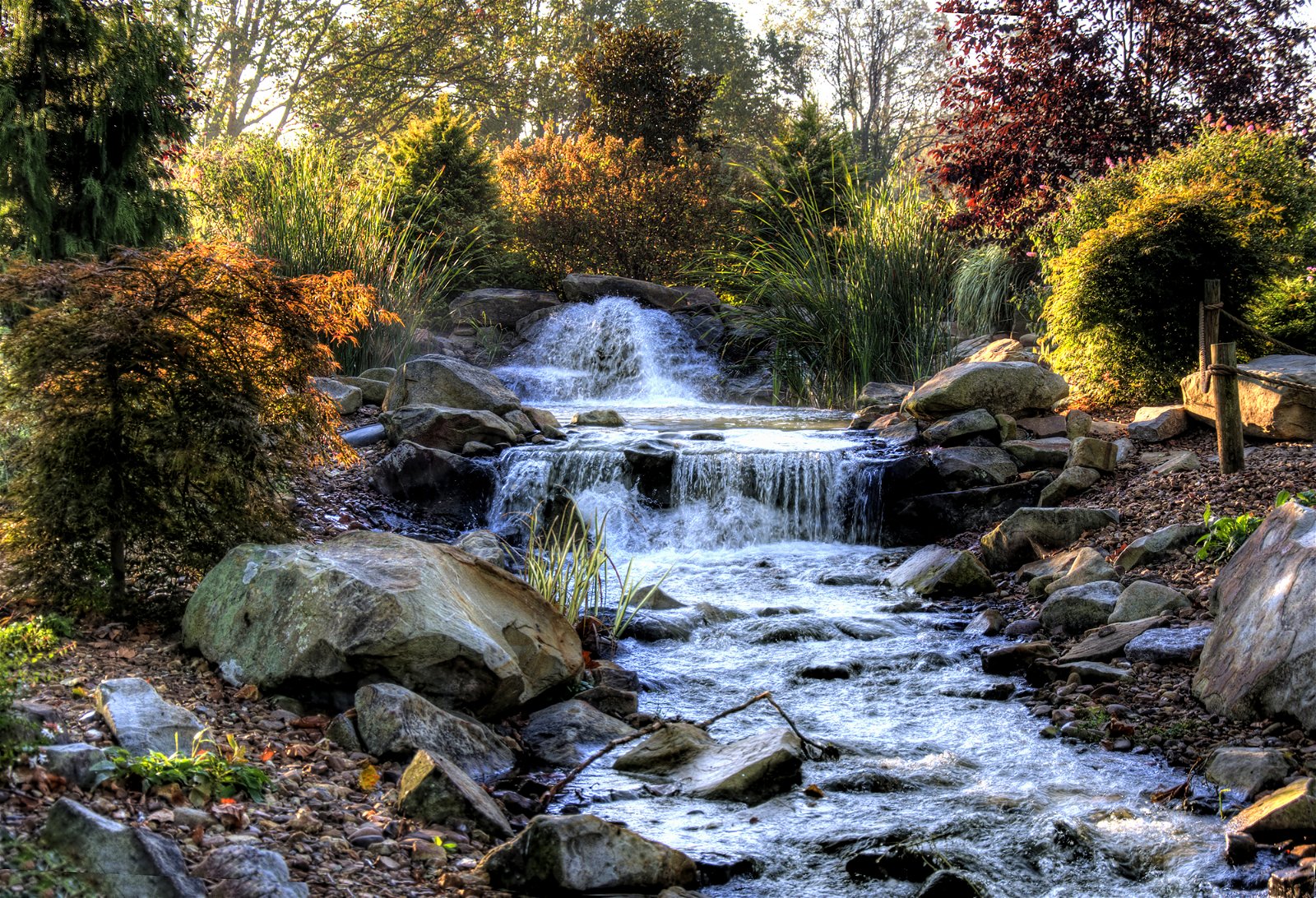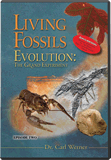
Timely Tale Tells Why Leaves Turn, Or Does It?
News to Know
Abstract
Are autumn’s colors explained by the Yucatan impact crater?
News Source
- EurekAlert!: “Meteorite That Doomed the Dinosaurs Helped the Forests Bloom”
By turning the leaves of time at the K-T boundary, evolutionary scientists report they have found the reason fall is filled with leaves that change color. A University of Arizona team examined what they believe to be 2.2 million years’ worth of fossilized leaves from southern North Dakota’s Hell Creek Formation. “When you hold one of those leaves that is so exquisitely preserved in your hand knowing it's 66 million years old, it's a humbling feeling,” says the research team’s lead author Benjamin Blonder. Blonder and colleagues say their data correlates the evolutionary rise of deciduous trees with the famous meteorite that left the Chicxulub (pronounced cheek’-she-loob) crater near the Yucatan Peninsula.

As a plant withers, it may produce vibrant colors because, as a leaf ceases to function, the chlorophyll degrades, revealing the colors of previously hidden pigments. Various organisms, including bacteria and fungi, play an active part in recycling plant matter, providing food for man and animals through this “very good” biological cycle. See Do Plants and Leaves Die? for more. Image: Deb Minnard from the Creation Museum grounds; Header image courtesy Jeremy and Susan Ham from the Cumberland Gap National Historical Park
Flowers and Forests
Evolutionary scientists believe that gymnosperms (such as evergreen conifers), which produce seeds without making flowers, are the ancestors of flowering trees. They believe flowering plants (angiosperms), which can be identified by their pollen in rock conventionally dated about 160 million years ago, diversified during the Early Cretaceous Period and later achieved the dominant position they occupy in the world today.
Flowering trees can be evergreen—non-seasonal plants that do not lose all their leaves at once—or seasonal deciduous plants that have distinct growing seasons. Today deciduous forests outnumber flowering evergreen forests. “When you look at forests around the world today, you don't see many forests dominated by evergreen flowering plants,” Blonder says. “Instead, they are dominated by deciduous species, plants that lose their leaves at some point during the year.” How did that come to be?
Selection for Growth Rate
“Plant Ecological Strategies Shift Across the Cretaceous-Paleogene Boundary,” published in PLoS ONE, describes the analysis of about a thousand leaf fossils from rock said to span the last 1.4 million years of the Cretaceous Period and the first 800,000 years of the Paleogene Period (the first part of the Tertiary, which is the “T” in “K-T boundary”). “If you think about a mass extinction caused by a catastrophic event such as a meteorite impacting Earth, you might imagine all species are equally likely to die,” Blonder explains. “Survival of the fittest doesn't apply—the impact is like a reset button. The alternative hypothesis, however, is that some species had properties that enabled them to survive.”
Could the difference in growth rate be the answer, the researchers wondered? Deciduous trees need to grow energetically and quickly during the growing season. Flowering evergreen trees like holly and ivy can grow more slowly than flowering deciduous trees since they can spread their growth throughout the year. “Our study provides evidence of a dramatic shift from slow-growing plants to fast-growing species,” Blonder says. “This tells us that the extinction was not random, and the way in which a plant acquires resources predicts how it can respond to a major disturbance. And potentially this also tells us why we find that modern forests are generally deciduous and not evergreen.”
If the Chicxulub impact filled our planet’s atmosphere with sun-blocking debris, they reason, the temperature would have cooled all over the world. Plants that could grow faster—like deciduous plants—might then have had an advantage. “The hypothesis is that the impact winter introduced a very variable climate,” Blonder says. “That would have favored plants that grew quickly and could take advantage of changing conditions, such as deciduous plants.”
To assess whether a fossilized leaf belonged to a deciduous or evergreen tree, Blonder explains, “We measured the mass of a given leaf in relation to its area, which tells us whether the leaf was a chunky, expensive one to make for the plant, or whether it was a more flimsy, cheap one. In other words, how much carbon the plant had invested in the leaf.” They also determined the density of the veins on each leaf. The vein density is related to the rate at which a leaf can take in water and incorporate carbon. Blonder explains, “There is a spectrum between fast- and slow-growing species. There is the ‘live fast, die young’ strategy [of deciduous plants] and there is the ‘slow but steady’ strategy [of evergreens]. You could compare it to financial strategies investing in stocks versus bonds.”
Crater and Cause
The 110-mile-wide Chicxulub impact crater just off of Mexico’s Yucatan Peninsula records the violent arrival of a large chunk of space debris at some time in the past. The Chicxulub event is popularly believed to have triggered climate changes that caused the extinction of dinosaurs. Evolutionary scientists believe the crater was made about 66 million years ago. They believe the high concentration of iridium in rocks near the Cretaceous-Tertiary (“K-T”) boundary came from space.1
The study’s authors conclude that climate change triggered by the Chicxulub impact led to selective extinction of more slow-growing plants. They believe this cleared much of the world’s evergreen forests for replacement by fast-growing deciduous angiosperms. But does their data demonstrate trends as clear-cut as they suggest?Commenting on the study, Answers in Genesis geologist Dr. Andrew Snelling points out that the data in the “fine print” of the study is not nearly as impressive as media reports suggest:
This paper and the associated news items are making big claims about very little. If you look at the supplementary figure 3 (see illustration) you will see that there were Cretaceous-only species, boundary-crossing species and Paleogene-only species that had the same LMA (leaf mass per unit area) measurement as well as high fossil abundance. Furthermore, boundary-crossing species and Paleogene only species are also among the Cretaceous-only species at the lower end of fossil abundance and with a similar LMA abundance. So all their claims about environmental changes across the K-Pg boundary are very contrived.

This is a graph of leaf mass per unit area (LMA) for leaf fossils in relation to the K-T (aka K-Pg, or Cretaceous-Paleogene) boundary. LMA reflects the amount of carbon in leaves. Researchers report that, moving upward through time across the K-T boundary, the decrease in LMA and increase in leaf vein density confirms a shift in plant ecology toward a more deciduous population. As Dr. Snelling describes (below) however, this graph shows that the actual data is far from clear-cut. Image: supplementary figure 3 to PLoS ONE (September 2014) 12(9) e1001949.
Perhaps the greatest problem with this study is the overwhelming determination to interpret the fossil layers as a record of the evolution of life forms rather than the record of the order in which billions of living things were catastrophically buried. Even if their data reflects a somewhat altered plant ecology across the K-T boundary, does that trend reveal anything about the evolutionary origin of flowering plants, deciduous or otherwise? Does it represent an altered earth environment over millions of years? And was the iridium concentration near the K-T boundary really caused by the Chicxulub impact? Did that impact have anything to do with dinosaur extinction and the rise of fall’s colorful trees? Addressing these questions, Dr. Snelling explains why the answers are all “no”:
In any case, their claimed evidence is easily reconciled with the closing stages of the Flood, without the need to invoke a meteorite impact as the cause. Of course, we do not deny that meteorite impacts occurred during the Flood as part of the global cataclysm, but they are an outcome not the cause.
The primary assumption to dismantle is that the order in the fossil record is a record of the evolution of life, and in this case, that the fossil plants found in these layers are a record of those plants’ response to climate changes associated with and resulting from a meteorite impact. Instead, these fossils are buried in this order due to how and when they were buried during the Flood.
Not surprisingly, the history of earth’s early years—found in the Bible—makes sense of the fossil layers and the data in this study, Dr. Snelling explains:
Our latest research is now showing that the peak of the Flood waters on Day 150 of the Flood year which coincided with the highest reach of global relative sea level was during the mid to upper Cretaceous, not far below the Hell Creek Formation in which many of these plant fossils are found. It is very likely then that the unconformity erosion surface marking the K-Pg boundary at the top of the terminal Cretaceous Hell Creek Formation represents the erosion caused by the retreating Flood waters.
That then explains why there is a change in the fossil plant species distribution and abundance across that boundary in the overlying Paleogene Fort Union Formation. The latter also contains coal beds, which could represent floating plant debris that got beached and buried by the retreating Flood waters. Also, those land areas exposed as the Flood waters retreated would start to get plant regrowth by asexual budding of plant debris grounded in the loose surficial sediments left behind by the retreating waters. Some surging would still be expected, so some initially exposed land areas on which plants started budding would be again covered in sediments and the plants buried and fossilized.
At the same time the climate would have been changing from the rain saturation of the inundation period of the first half of the Flood, to the drying out period as the waters retreated, the clouds cleared, and sun came out again. Thus it is to be expected there would be some changes in the plant species that survived and thrived during this transition period.
This matches what this research paper shows, except that the changes in plants species are not as pronounced as the researchers claim, as their actual data shows in their supplemental figure 3. It should also be kept in mind that the plant fossils found in these sedimentary layers and samples represent only those species and their numbers that got buried and fossilized. And since catastrophic burial can be selective according to factors such as floatability and sorting, the fossils sampled may not be a true representation of the numbers and distribution of the plant species caught up in the Flood waters, beached or re-growing in these sediments and then buried.
So the data from this media-hailed research study are not as definitive as the fanfare claims, because their raw data actually shows that the changes in species distribution and numbers are not as clear cut as claimed by the researchers’ summary and in the media fanfare. On the other hand, their data are totally compatible with the burial order and manner of burial of these plant species during the later stages of the Flood, after the waters had peaked and were retreating and new land surfaces were starting to be established and dry out, when the climate would also have been changing from the rain and moisture of the inundation stage of the Flood to the warmth of the drying out phase.
The Hell Creek and Fort Union Formations do not reveal the evolutionary history of forests, flowers, or fall colors. They are instead a testimony to the global Flood and its aftermath, as described in the Word of God. These layers of sediment and the fossils they preserve come from the pages of history not millions but only about 4,350 years ago. Blonder might find it humbling to hold an exquisitely preserved leaf believing it to be 66 million years old, but how much more humbling is it to believe the history God provides in His Word. How much better to acknowledge the truth that a Flood of judgment once covered the entire earth, and that every one of us is a sinner (Romans 3:23) that can only be saved by the grace (Romans 6:23) of Jesus Christ and hissacrificial love for us, the Son of God through and by whom all that exists was created (Colossians 1:16–17) and to whom every knee will someday bow (Philippians 2:9–11).
Further Reading
- Dinosaur Demise Now Confidently Blamed on Chicxulub Asteroid
- Closing In On the K-T Boundary of Dinosaur Extinction
- Did Meteors Trigger Noah’s Flood?
- Fossil Flowers in Amber Don't Solve Darwin’s “Abominable Mystery”
- Mystery of Flowering Plants Solved?
- Noah’s World—Same Time, Different Place
For More Information: Get Answers
Remember, if you see a news story that might merit some attention, let us know about it! (Note: if the story originates from the Associated Press, FOX News, MSNBC, the New York Times, or another major national media outlet, we will most likely have already heard about it.) And thanks to all of our readers who have submitted great news tips to us. If you didn’t catch all the latest News to Know, why not take a look to see what you’ve missed?
(Please note that links will take you directly to the source. Answers in Genesis is not responsible for content on the websites to which we refer. For more information, please see our Privacy Policy.)
Footnotes
-
The idea that an asteroid triggered dinosaur extinction was hatched in the 1980s when Berkeley scientists Luis and Walter Alvarez noticed an unusually high concentration of iridium in rocks near the K-T boundary. Below it, in Cretaceous ( “K”) rock, are dinosaur fossils. Above it—past the “K-T” boundary in the Paleogene layer of the “Tertiary” ( “T”) rocks, there are none. Evolutionary scientists believe the geologic column represents the time various animals evolved and went extinct over millions of years. Because dinosaurs and many other organisms do not appear above the K-T boundary, evolutionary scientists believe the K-T boundary represents one of several “mass extinction” events.
Evolutionary scientists did not think the iridium near the K-T boundary could have originated on earth because they thought that over millions of years iridium would have sunk into a molten earth. Therefore, they looked for a space source, like an asteroid. The “smoking gun” to explain the iridium in the rocks seemed to surface in 1990 with the realization that the massive Chicxulub crater in Mexico appeared to be the result of huge meteorite impact. Scientists believe that a chunk of space debris—possibly from an asteroid or even a comet—could have made the crater, supplied our planet with a generous portion of iridium, and caused a large dust cloud to block out the sun’s light for long enough to alter climate parameters worldwide, select against many species of plants and animals, and cause many species to go extinct.
Among other problems with this idea is the fact that there is too much iridium dispersed over the earth to be explained by an asteroid impact. Though asteroids (and meteorites derived from them) do contain iridium, only the areas around impact craters are generally enriched with iridium. Therefore, it is unlikely that such space-borne iridium would have dispersed over the entire earth. Iridium coughed up by volcanic activity, however, does tend to spread out over the earth’s surface. Thus, the global Flood—which both the Bible and earth’s geology suggest was accompanied by volcanic activity—is a reasonable explanation for the iridium found at the K-T boundary. Read more about it in “Dinosaur Killer.”
Many writers, incidentally, refer to the K-T boundary as the “K-P” or “K-Pg” boundary, “Pg” for “Paleogene.” “Paleogene” rock and “Neogene” rock (above it) together make up the Tertiary rock layers, conventionally believed to span the time from 66 million to 1.8 million years ago.
Recommended Resources

Answers in Genesis is an apologetics ministry, dedicated to helping Christians defend their faith and proclaim the good news of Jesus Christ.
- Customer Service 800.778.3390
- © 2024 Answers in Genesis




